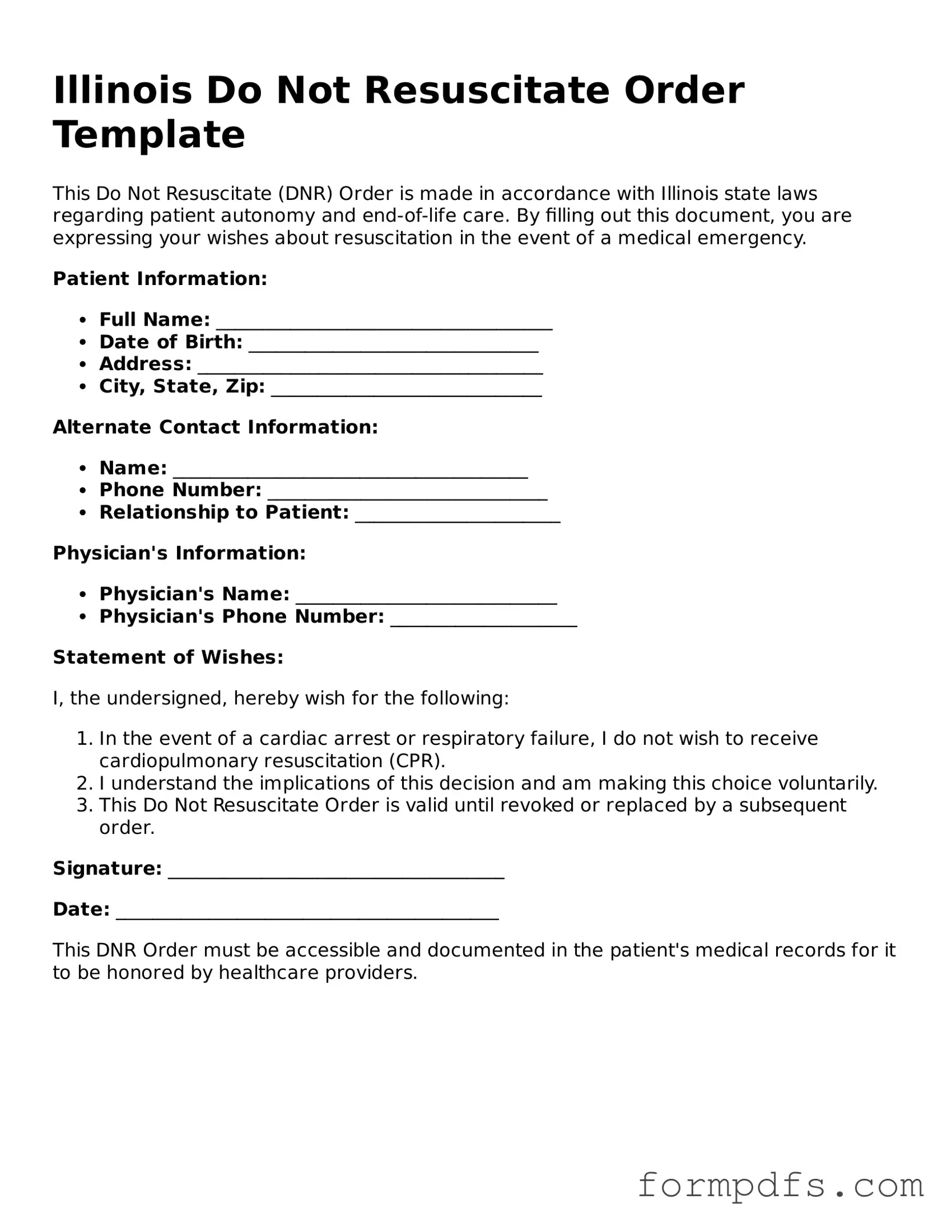What is a Do Not Resuscitate (DNR) Order in Illinois?
A Do Not Resuscitate Order is a legal document that allows individuals to refuse cardiopulmonary resuscitation (CPR) and other life-saving measures in the event of a medical emergency. In Illinois, this order is specifically designed for patients who have a terminal condition or are in a state where resuscitation would not improve their quality of life. It ensures that medical personnel respect the patient's wishes regarding end-of-life care.
Who can complete a DNR Order in Illinois?
In Illinois, a DNR Order can be completed by a patient who is at least 18 years old and has the capacity to make their own medical decisions. If the patient is unable to make decisions, a legally authorized representative, such as a family member or guardian, may complete the form on their behalf. It is crucial that the person completing the order understands the implications of refusing resuscitation.
How do I obtain a DNR Order form in Illinois?
The DNR Order form can be obtained from various sources, including hospitals, healthcare providers, and online resources. The Illinois Department of Public Health also provides a downloadable version of the form on their website. It is essential to ensure that you are using the most current version of the form to avoid any issues with compliance.
What information is required on the DNR Order form?
The DNR Order form requires specific information, including the patient's name, date of birth, and medical condition. It must also include the signature of the patient or their authorized representative, as well as the signature of a physician. This ensures that the order is valid and recognized by medical personnel during emergencies.
Is a DNR Order valid in all healthcare settings?
Yes, a properly completed DNR Order is valid across all healthcare settings in Illinois, including hospitals, nursing homes, and home care. However, it is crucial to ensure that copies of the DNR Order are readily available to healthcare providers. This way, your wishes will be respected no matter where you receive care.
Can a DNR Order be revoked or changed?
Absolutely. A DNR Order can be revoked or changed at any time by the patient or their authorized representative. To do this, simply destroy the existing DNR Order and inform your healthcare providers of your decision. If you wish to create a new DNR Order, ensure that it is properly completed and signed to avoid any confusion in the future.
What should I discuss with my healthcare provider regarding a DNR Order?
It is important to have an open and honest conversation with your healthcare provider about your wishes and values regarding end-of-life care. Discuss your medical condition, treatment options, and the implications of a DNR Order. This dialogue can help ensure that your healthcare team understands your preferences and can provide care that aligns with your wishes.
